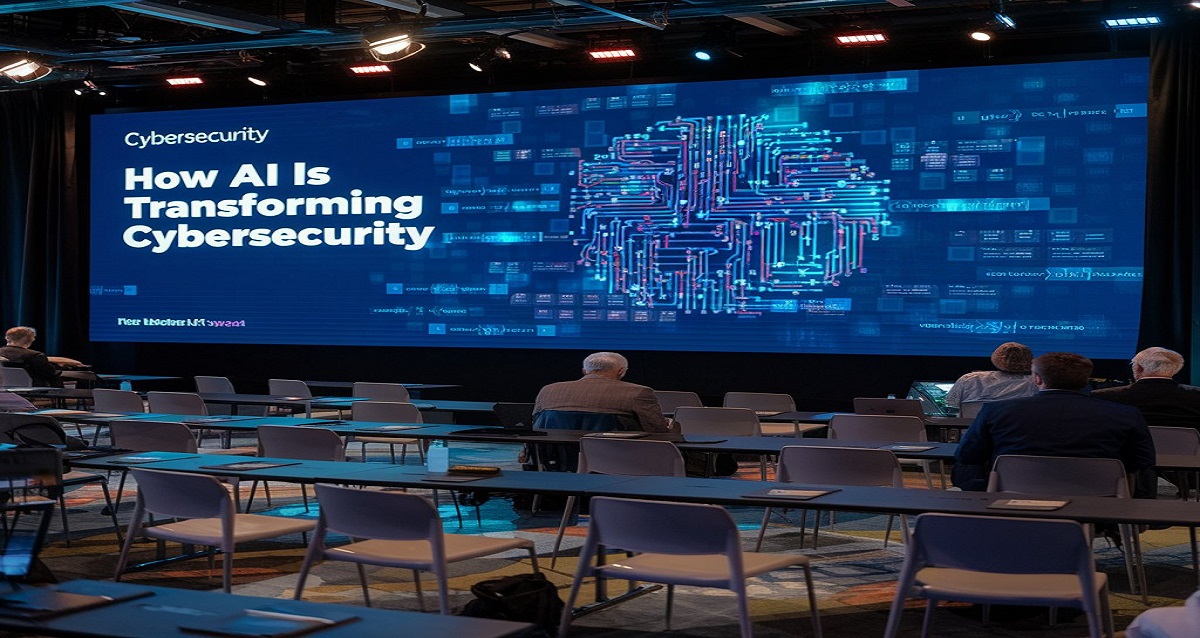In a world where cyber threats are more sophisticated than ever, artificial intelligence (AI) has emerged as a powerful ally in cybersecurity. From protecting sensitive information to identifying and neutralizing malicious attacks, AI-driven cybersecurity tools have transformed the way businesses and individuals secure their digital environments. In this article, we’ll explore how AI is reshaping the cybersecurity landscape, examine some of the top AI tools available, and dive into the unique features they offer to help businesses stay ahead of cyber threats.
Table of Contents
Why AI in Cybersecurity?
Traditional cybersecurity measures are still essential, but they’re not always equipped to handle the complexity and volume of today’s cyber threats. As cyberattacks become more advanced and adaptive, relying solely on static defense mechanisms and manual threat management can leave organizations vulnerable. Here’s where AI makes a difference.
AI can analyze vast amounts of data in real-time, learning and adapting to detect unusual patterns or behaviors. Its predictive capabilities help it identify new and emerging threats before they become damaging. By automating tasks that once required human intervention, AI can quickly respond to attacks, minimizing the damage caused and freeing up human resources for more strategic work.
Top AI-Powered Cybersecurity Tools
Here’s a look at some of the most impactful AI cybersecurity tools on the market today, with unique features that cater to different security needs:
1. Darktrace
- Features: Darktrace uses machine learning to monitor network behavior and identify potential threats through anomaly detection. The tool learns what constitutes “normal” for each network and flags deviations, suggesting potential risks. One standout feature is Antigena, an autonomous response system that actively mitigates threats in real-time, without needing manual intervention.
- Best For: Large enterprises looking for real-time threat detection and automatic mitigation without relying on human oversight.
2. Cylance (BlackBerry)
- Features: Cylance is known for its preemptive approach to security. It uses predictive models that analyze billions of code files, enabling it to block malicious files before execution. Its strength lies in endpoint protection, preventing malware infections and other threats.
- Best For: Organizations prioritizing endpoint security with a focus on malware prevention.
3. Vectra AI
- Features: Vectra AI specializes in network detection and response (NDR). It uses machine learning to detect threats that other systems may miss by continuously analyzing user and device behavior. Vectra’s algorithms can spot advanced threats, like fileless attacks or privilege escalation, and provide actionable insights.
- Best For: Companies requiring robust network security, especially in highly dynamic and hybrid environments.
4. CrowdStrike Falcon
- Features: CrowdStrike Falcon is an endpoint detection and response (EDR) solution that leverages AI to monitor endpoint behavior. It provides real-time insights into suspicious activities on devices, helping to prevent malware and ransomware attacks. Falcon’s integrated threat intelligence and behavioral analytics offer high visibility and fast response to threats.
- Best For: Businesses seeking AI-powered, real-time endpoint protection with advanced threat intelligence.
5. Splunk
- Features: Splunk is widely used for Security Information and Event Management (SIEM) and utilizes machine learning to detect patterns in security data. The tool’s robust analytics enable it to detect threats across large networks and provide insights for quicker threat resolution. Splunk also integrates with other security platforms, giving teams comprehensive visibility.
- Best For: Enterprises needing a scalable, analytics-driven SIEM with machine learning capabilities for real-time threat monitoring.
6. IBM QRadar
- Features: Another SIEM solution, IBM QRadar combines threat intelligence with machine learning for anomaly detection. It collects and correlates data from various sources to identify complex security incidents. With its AI-powered insights, QRadar can detect and prioritize threats, allowing teams to respond faster.
- Best For: Organizations requiring advanced SIEM capabilities with strong integration for centralized security management.
7. FortiAI (Fortinet)
- Features: FortiAI uses deep learning to identify and respond to malware attacks. Its autonomous capabilities help it classify new and unknown threats in real-time, reducing the need for human intervention. FortiAI excels at protecting organizations from zero-day vulnerabilities by quickly learning from new threats.
- Best For: Businesses prioritizing real-time malware protection, especially against zero-day attacks.
8. FireEye Helix
- Features: FireEye Helix is an AI-powered SIEM platform that enhances threat detection through machine learning, automation, and built-in threat intelligence. Helix integrates with other FireEye solutions, allowing for comprehensive and coordinated responses to threats.
- Best For: Companies with a broad IT environment needing integrated threat intelligence for fast, automated response.
9. Microsoft Azure Sentinel
- Features: A cloud-native SIEM, Azure Sentinel provides AI-enhanced analytics to detect, investigate, and respond to threats. It uses machine learning to aggregate data from multiple sources, helping security teams prioritize alerts more effectively.
- Best For: Businesses using cloud infrastructure, especially those within the Microsoft ecosystem, who want a scalable, AI-enhanced SIEM.
10. Securonix
- Features: Securonix uses AI-driven User and Entity Behavior Analytics (UEBA) to detect abnormal behaviors and insider threats. Its machine learning algorithms analyze patterns and identify high-risk activities across cloud and on-premises environments.
- Best For: Companies concerned with insider threats, requiring behavior-based analytics for enhanced security.

How AI Enhances Threat Detection and Response
AI significantly improves threat detection and response by automating processes that were previously time-consuming. Here’s how it’s done:
- Predictive Analysis: AI can predict potential threats by identifying patterns associated with known malicious activities. This capability allows cybersecurity systems to preemptively block threats, reducing the likelihood of successful attacks.
- Behavioral Analysis: Tools like Vectra AI and Securonix leverage AI to monitor and analyze user behavior. If a user’s activity deviates from their normal pattern, the system flags it as suspicious, allowing security teams to investigate potential insider threats.
- Automated Incident Response: Many AI tools, such as Darktrace and CrowdStrike Falcon, can respond to threats automatically, reducing the time it takes to contain and neutralize a security incident. This autonomous response is invaluable in preventing the spread of malware or data breaches.
- Efficient Data Management: AI processes massive amounts of data in real-time, filtering out noise to focus on critical threats. This helps cybersecurity teams prioritize high-risk incidents and manage their resources more effectively.
Limitations and Challenges of AI in Cybersecurity
While AI offers significant benefits, it’s not without its challenges:
- False Positives: AI models can generate false positives, alerting teams to non-threatening events, which may lead to alert fatigue.
- Data Privacy: AI tools that analyze behavior can sometimes blur the line between security and privacy, raising ethical concerns.
- Complexity and Cost: AI-driven solutions often require skilled professionals for implementation and monitoring, adding to the complexity and cost of cybersecurity.
- Adversarial AI: Cybercriminals are also using AI, creating threats that are specifically designed to evade AI-based detection systems, leading to an ongoing “arms race” in cybersecurity.

The Future of AI in Cybersecurity
The future of AI in cybersecurity is promising, with advancements in deep learning, predictive analytics, and threat intelligence on the horizon. As AI algorithms become more sophisticated, we can expect:
- More Accurate Predictions: Enhanced predictive models will likely reduce false positives and improve the accuracy of threat detection.
- Automated Threat Hunting: AI tools will play a larger role in identifying vulnerabilities within networks and systems before they can be exploited.
- Adaptive Security Models: AI-driven cybersecurity will become more adaptable, with tools evolving in real-time to combat changing threats.
- Collaboration Across Tools: We can anticipate more integration across AI tools, allowing for a more cohesive and comprehensive security strategy across entire digital ecosystems.
Check out Best 10 AI Animation Tools.
Conclusion
AI in cybersecurity is proving to be a game-changer, helping organizations stay one step ahead of increasingly sophisticated threats. From advanced anomaly detection with Darktrace to endpoint protection by CrowdStrike Falcon, AI-driven tools are making it easier for security teams to detect, prevent, and respond to cyberattacks. Although challenges remain, AI’s benefits in terms of efficiency, predictive capabilities, and automated response make it an essential asset in modern cybersecurity.
As cyber threats evolve, the demand for AI-powered solutions will continue to rise, shaping a future where security is not only smarter but also more proactive.
Frequently Asked Questions: How AI is Transforming Cybersecurity
How does AI improve threat detection in cybersecurity?
AI enhances threat detection by learning from past attack patterns, recognizing unusual behavior, and flagging potential threats. It excels at processing vast datasets in real-time, filtering out noise and reducing false positives, making it easier for security teams to prioritize high-risk incidents. Additionally, AI can autonomously detect and respond to threats, minimizing human intervention and speeding up threat containment.
Can AI-based cybersecurity tools prevent all cyber threats?
No, while AI greatly enhances cybersecurity, it’s not foolproof. Adversarial AI, privacy concerns, and false positives are some challenges that AI cannot fully overcome. Cybercriminals also use AI to develop threats specifically designed to bypass AI-based detection. However, when combined with traditional cybersecurity measures and human expertise, AI provides a powerful defense against most threats.
Are AI-driven cybersecurity tools expensive to implement?
AI cybersecurity tools often require a significant initial investment due to their complexity and the need for skilled personnel to manage them. However, many businesses find that the long-term benefits, such as reducing the frequency and impact of breaches, justify the cost. Some tools offer scalable solutions or cloud-based options, like Microsoft Azure Sentinel, which can be more affordable for smaller businesses.

